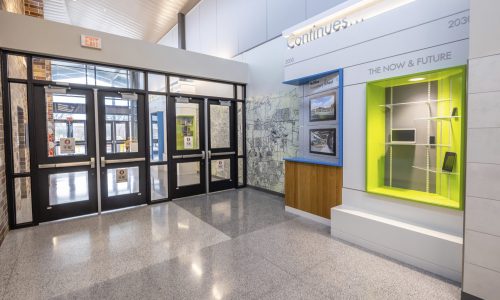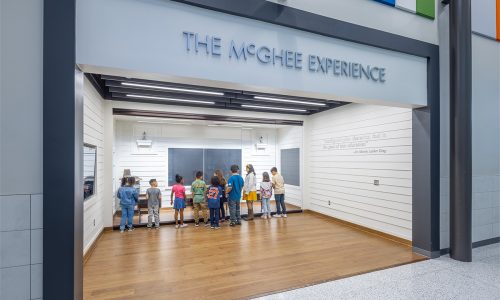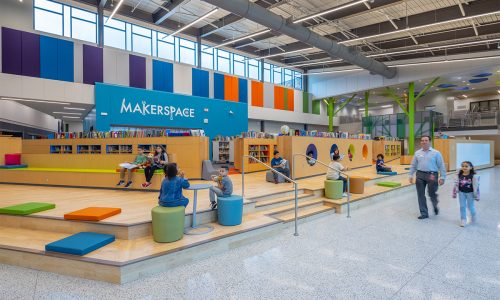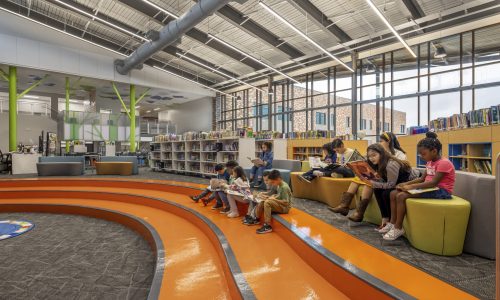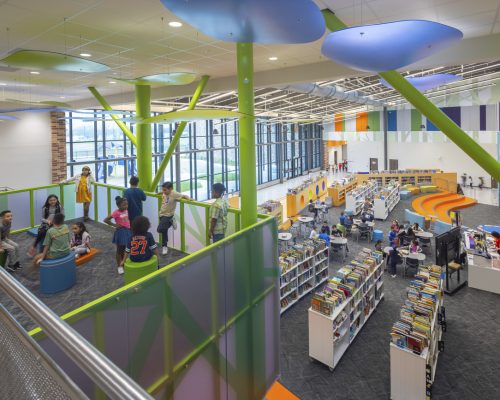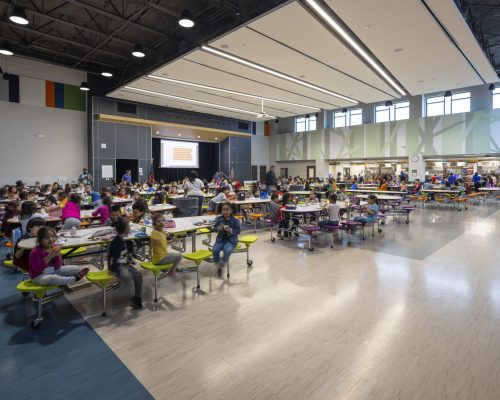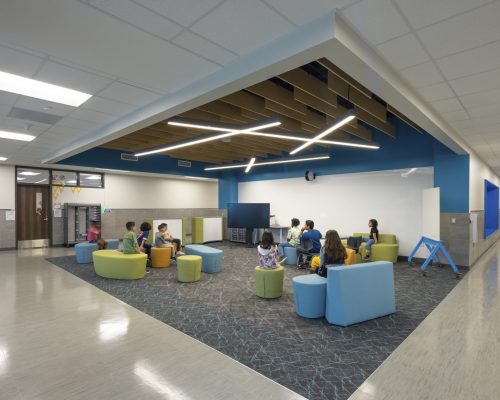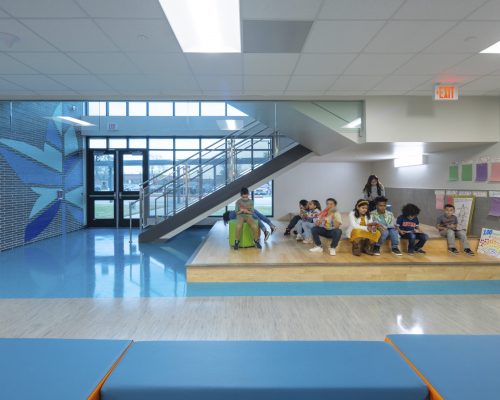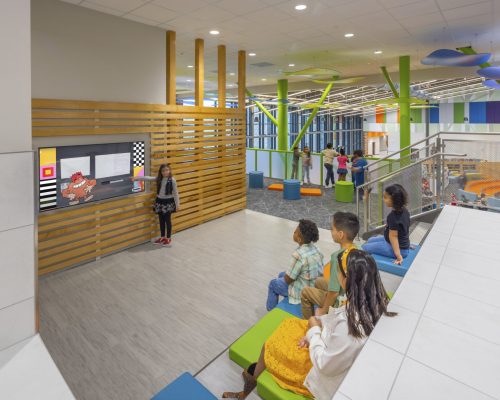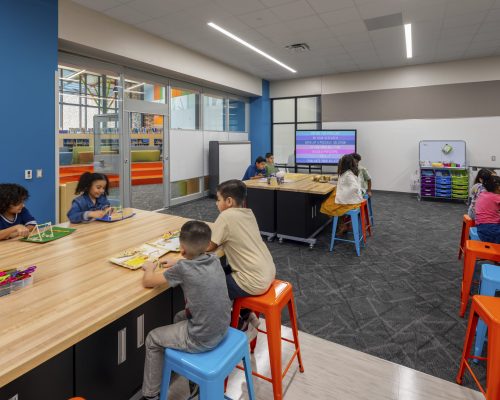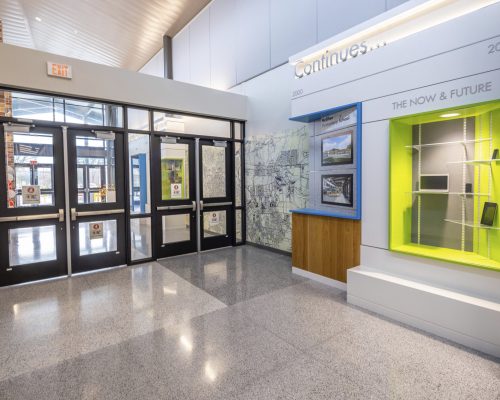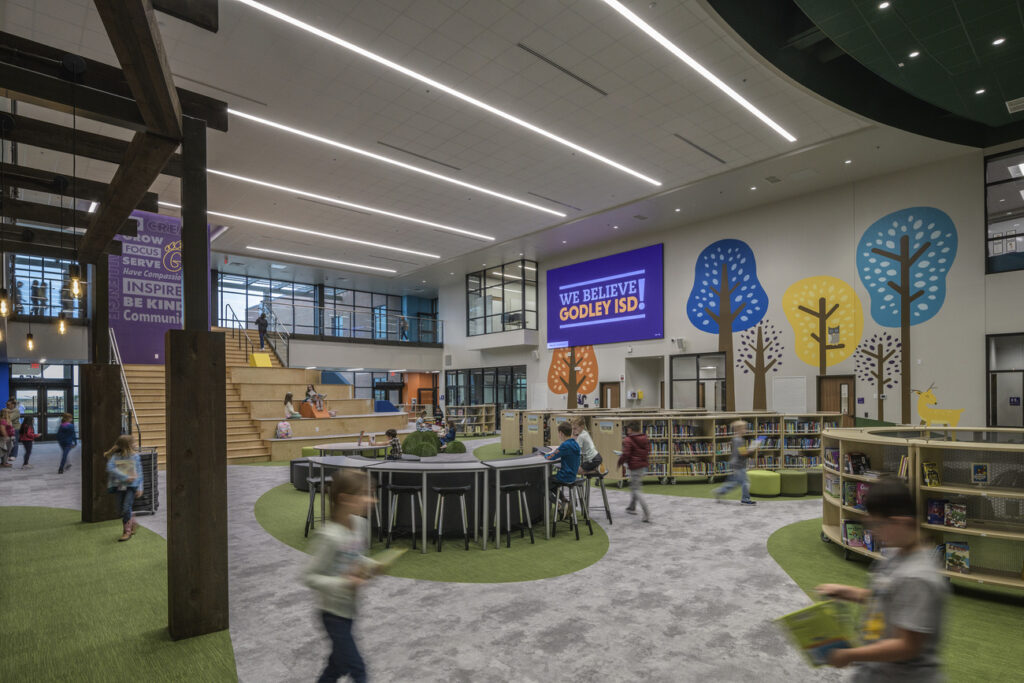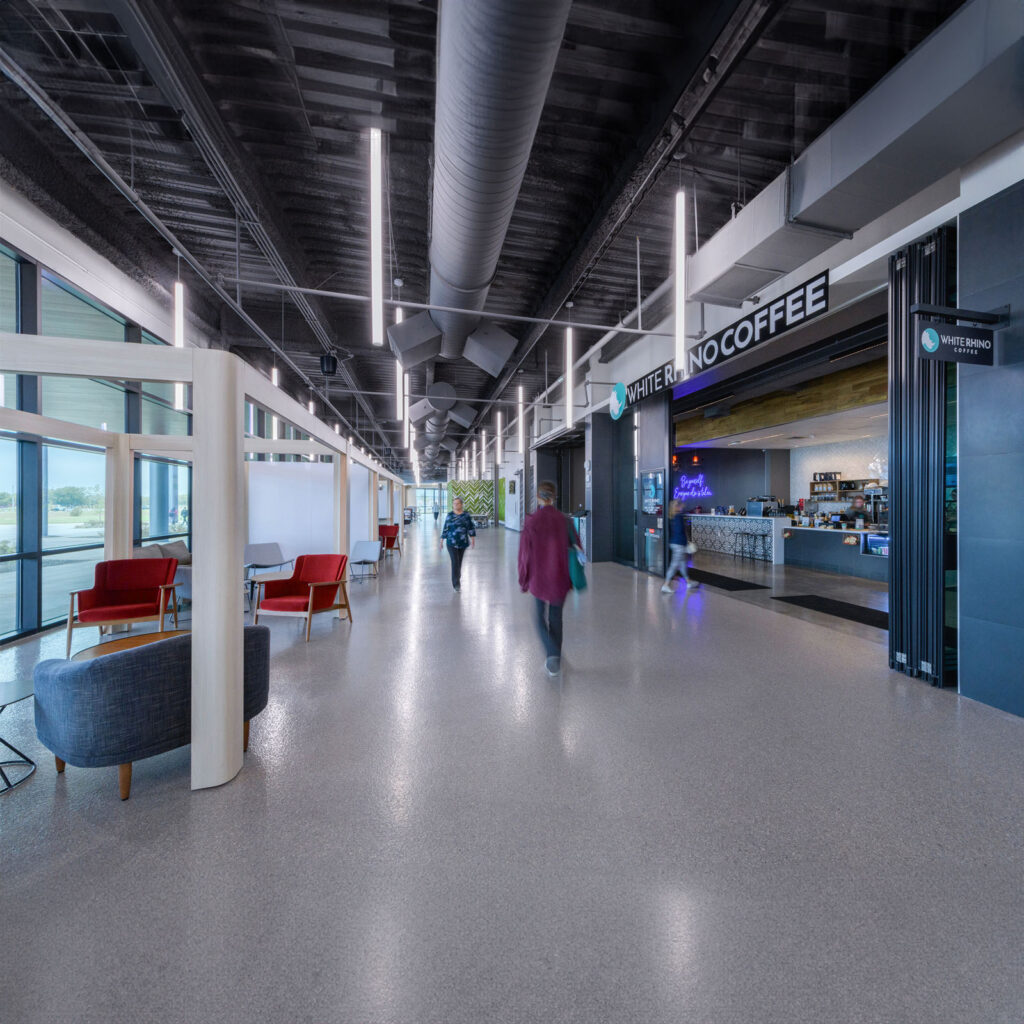Multifaceted and playful as they are open, the interiors of McGhee Elementary School are crafted to support the development of all students. Just inside the main vestibule, a museum exhibit pays homage to the school’s namesake, a one-room building built by Joseph McGhee in 1916 on land he donated. The wooden schoolhouse was the first to serve Black students in Texas, with one teacher educating 1st through 7th grade. A chronicle of the building’s journey through the decades, alongside artifacts like the original school bell, sit to one side of the hall. On the other, a replica of the schoolhouse interior invites visitors to reflect on the revamped facility’s origins under a quote from Dr. Martin Luther King Jr.
No space lends more perspective to how far McGhee Elementary has come than the library. Mobile bookstacks and flexible furniture sit at the center of the open, double-height space, between a long wall of windows that look to the playfield on the east and a maker space fronted by a foldable glass partition on the west. A raised wooden platform hugs the perimeter of the central commons, offering students benches, nooks, and other creative options for settling down to study and read. Two ramps carve through the platform, maintaining accessibility for all. A treehouse at the mezzanine level on the south wall overlooks the scene, supported by leaf-green structural beams fashioned after tree trunks to add a biophilic touch that complements the abundance of natural light in the space.
McGhee’s colors are bright and modern. The same exuberant hues of blue, green, purple, and orange get repeated in space after space, from the acoustic panels that line the upper reaches of the library to the metal trim that frames the museum exhibit’s display cases and windows across campus. In tandem with leaf prints painted on the brick that clads the stairwells, the palette helps students find their way.
The school’s design came together in the time of Covid, through virtual charettes with parents, teachers, and the district. In the final design, no opportunity for connection was overlooked. A variety of collaboration zones open playful and creative opportunities for gathering and educating students.










